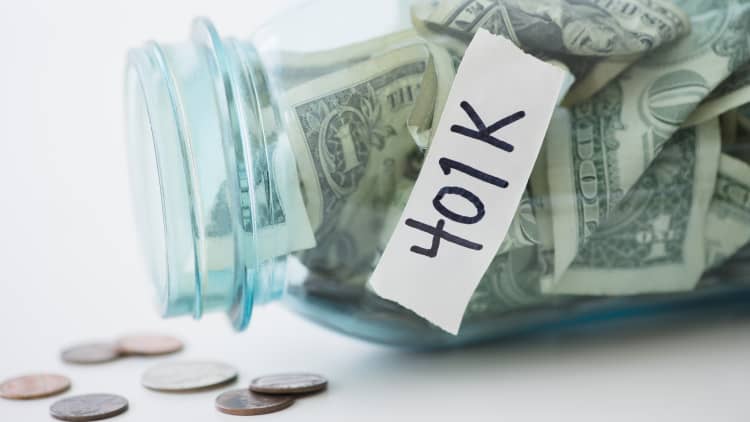
The dust-up over 401(k)s is a good opportunity to remind everyone how bad the state of the average person's retirement plan is.
The good news: the total value of investment in 401(k)s and other defined contribution plans are at a new high, thanks to the stock market rally.
The bad news: the numbers are still terrible. Americans don't save enough for their retirement, with or without 401(k)s.
According to Vanguard, 94 million Americans are covered by defined contribution accounts (most of it in 401(k)s); assets are in excess of $7 trillion.
Sounds like a lot of money, and it is, but when you really drill down there's not a lot in the accounts.
Look at those numbers: the median value (half have more, half have less) of a 401(k) account for someone 65 and over is about $60,000. Let's assume at 65 you're going to live another 20 years to 85: $60,000 isn't much to live on spread out over 20 years.
This is important because the other two "legs" of the retirement "stool"—Social Security and pensions—are increasingly under pressure.
As of January 2017, the average retiree receives $1,360 per month from Social Security. That's $16,000 a year. About one-third of adults over 65 also collect a pension, but it's not a large amount of money. The median private pension was only $9,376 per year, according to the Pension Rights Center (state, local, and federal pensions were higher).
Do the math. For those who collect Social Security and are lucky enough to collect a private pension, they collect roughly $25,000 a year.
And those are the lucky ones. Anyone looking to collect above that are going to need their personal savings. That gets me back to the 401(k). That $60,000 is roughly $3,000 a year assuming a 20-year lifespan.
That's not going to do much to move the needle. You need 10 times that amount of savings to make a significant impact, but the vast majority aren't anywhere near that.
Given how difficult the situation is, you'd think people would be throwing money into retirement funds, but oddly they're not. Vanguard says that only 10.9 percent of 401(k) plan participants contribute the maximum amount allowed by IRS guidelines. That's partly because most people don't make enough money to contribute the total amount, but a lot of other people are just not incentivized enough to save.
The question is a simple one: how do we incentivize people to save more for retirement?
I'm not necessarily wedded to 401(k) plans. Other countries have tried different plans. A Universal Savings Account, where investors contribute after-tax money but the gain on the accounts are tax free, have been successfully implemented in Canada and the U.K. Investors can take out money at any time without paying taxes or penalties. This increases liquidity and encourages people to save more. It's a simpler savings method than a 401(k), sort of like a super-ROTH IRA.
Senator Jeff Flake (R., Ariz.) and Representative Dave Brat (R., Va.) have floated plans to create Universal Savings Accounts, but nothing has happened.
One thing's for sure: if we don't find some way to get people to save more, a lot of people are going to work into their eighties, or they're going to outlive their money.


